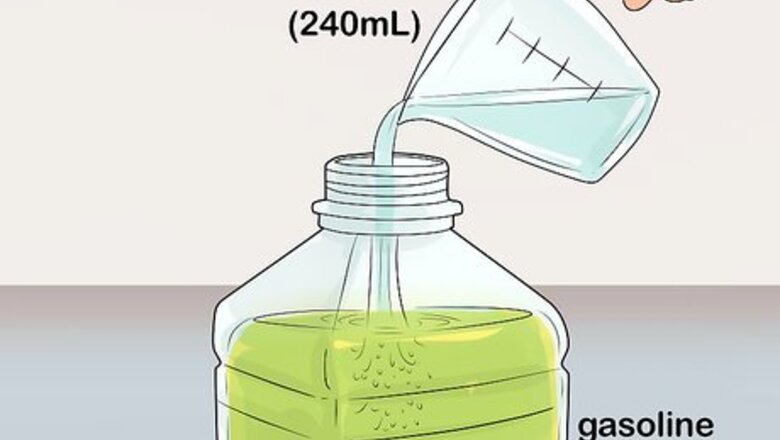
views
Separating the Ethanol and the Gas
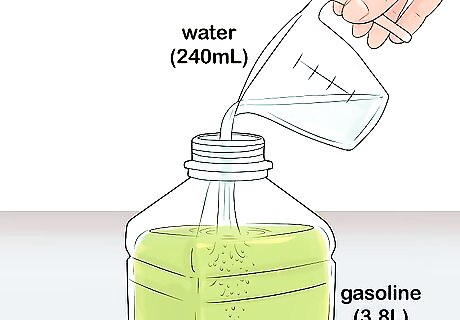
Pour 1 cup (240 mL) of water per 1 gallon (3.8 L) of gasoline into a safe container. For your safety, put on nitrile gloves and place the empty gasoline container on the ground in a ventilated area -- outdoors is best. Pour the gas into the container first, followed by the water. Pour slowly to avoid splashing. While working to separate the gasoline, make sure to use a container designed for storing gasoline, which should create a tight seal when closed. Also, don't fill the container more than 95% full, as the gasoline needs room to expand. If you try to hold the container while pouring, you can cause the vapors to ignite from static electricity. If you want, you can add a few drops of food coloring to the water first to make it easier to see the layers of water/ethanol and gasoline when you're done.

Shake the water and gasoline together. Place the cap on the container, ensuring it's tightly sealed. Shake the mixture together thoroughly. You want to shake it for a good 15 to 30 seconds to make sure the water and gasoline are thoroughly incorporated. Do not be anywhere near an open flame when performing this maneuver. Vapors can ignite.

Use a device like an Ethanator. Once you shake the mixture, pour it into the Ethanator to sit. When the water has settled out, use the valve at the bottom of the bottle to drain off the water and the ethanol into a container. When you're done, remove your gloves, and wash your hands thoroughly. You'll need to leave the mixture to settle for at least 3 to 4 hours, but you may want to leave it overnight or as long as 12 hours. Once the mixture is ready, it will be perfectly clear without cloudiness, and you'll see 2 distinct layers. The gasoline will settle on top and the water and ethanol mixture will settle on the bottom.
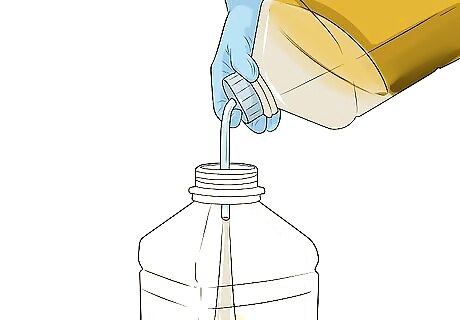
Pour off the gas after the mixture settles, instead. If you don't have an Ethanator, you can carefully pour the ethanol-free gasoline layer into another fuel-safe container, after it's been left to separate for several hours. Tip the container over another one to pour off the gasoline. This will be easier to do if you added the food coloring to the water, as you'll be able to see the layers better. This method probably won't be quite as easy or as safe as the Ethanator, as it's easier to spill gasoline this way. You may also waste a bit more fuel (by leaving it behind with the ethanol) than with the other method.
Using a Separatory Funnel
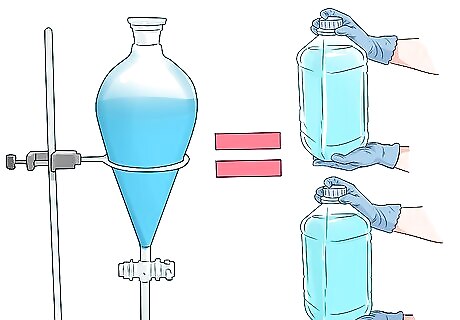
Pick a funnel that's twice as large as the liquid you'll add. Separatory funnels are used in chemistry to separate liquids. It needs to be double the size so the liquid has room to move around.

Check the valve at the bottom. The valve, called the stopcock, should be in a closed position so liquid can't come out. Use a ring stand to hold the funnel in the air, so you don't have to hold it.
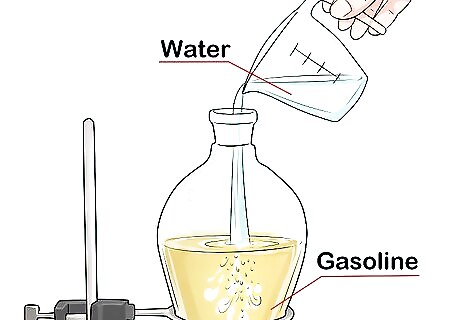
Pour the gasoline and water into the funnel. Take the stopper off the top, and add the gasoline to the funnel. Pour the water in after the gasoline, and replace the stopper. Use about 1 part water to 16 parts gasoline. Ensure there are no open flames around, as gasoline vapors can ignite.
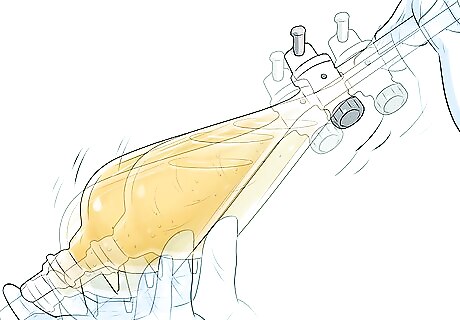
Shake the solution. Put your finger on top of the stopper. Turn the funnel upside down, and shake the solution. With the stopper facing downward, turn the stopcock to open to vent any pressure. Close the stopcock, and shake the solution some more. Repeat 2 or 3 times.
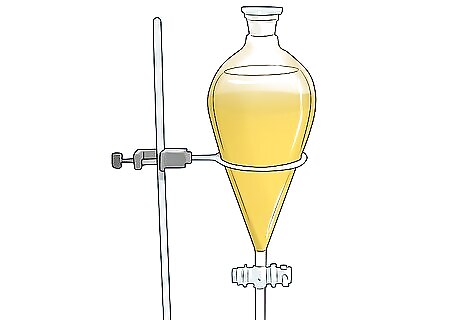
Place the funnel back in the holder. The stopcock should be facing downward in the ring stand. Let the mixture sit until the gasoline isn't cloudy anymore and you have a clear separation between the 2. It will take at least a couple of minutes.
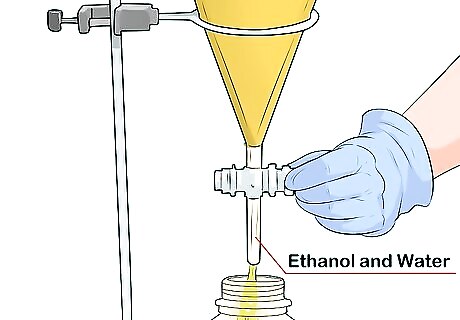
Drain the ethanol and water out of the bottom. Place a container under the funnel. Open the stopcock to let the ethanol and water come out the bottom. Be careful to stop right where the mixture is separated, and close the stopcock.
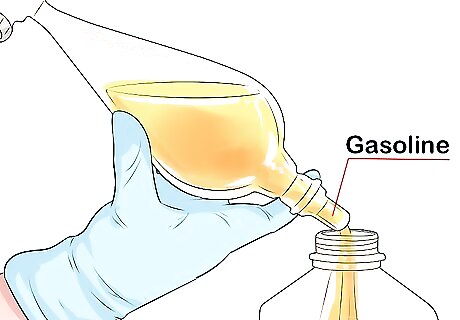
Pour the gasoline out of the top. Take the stopper off, and tip the funnel upside down to pour the gasoline into a container approved for gasoline storage. Make sure to label both the gasoline and the ethanol clearly. Do not fill the gasoline container more than 95% full so the gasoline has room to expand.

















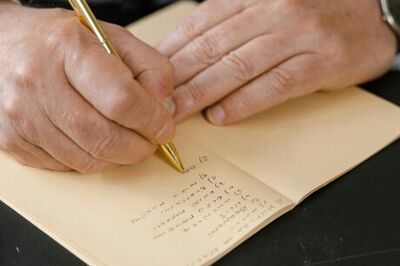
Comments
0 comment